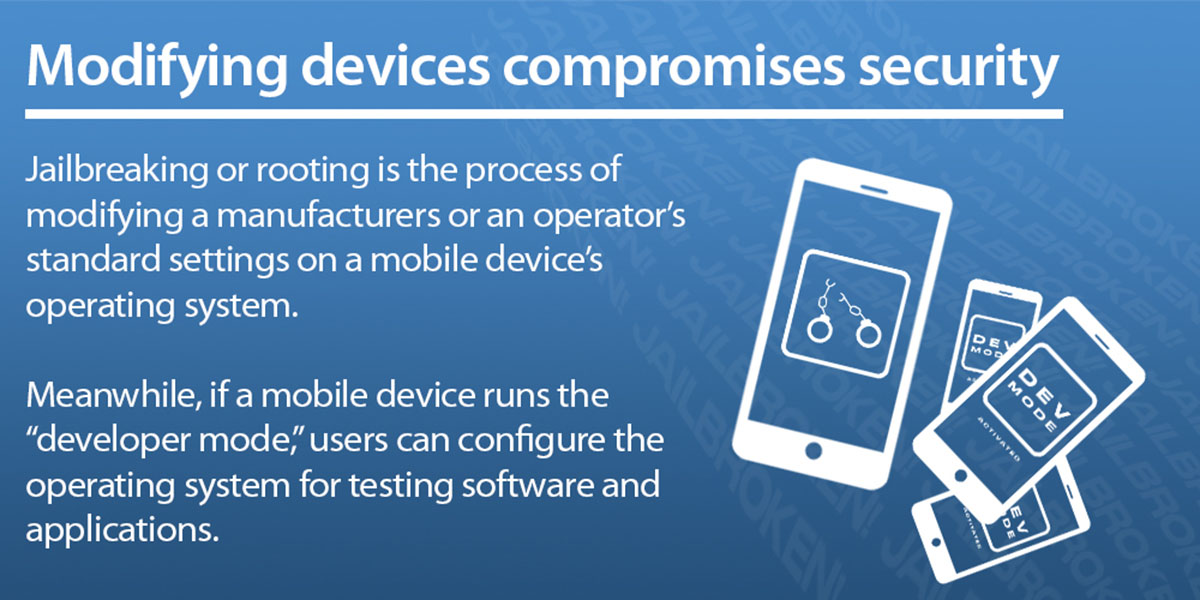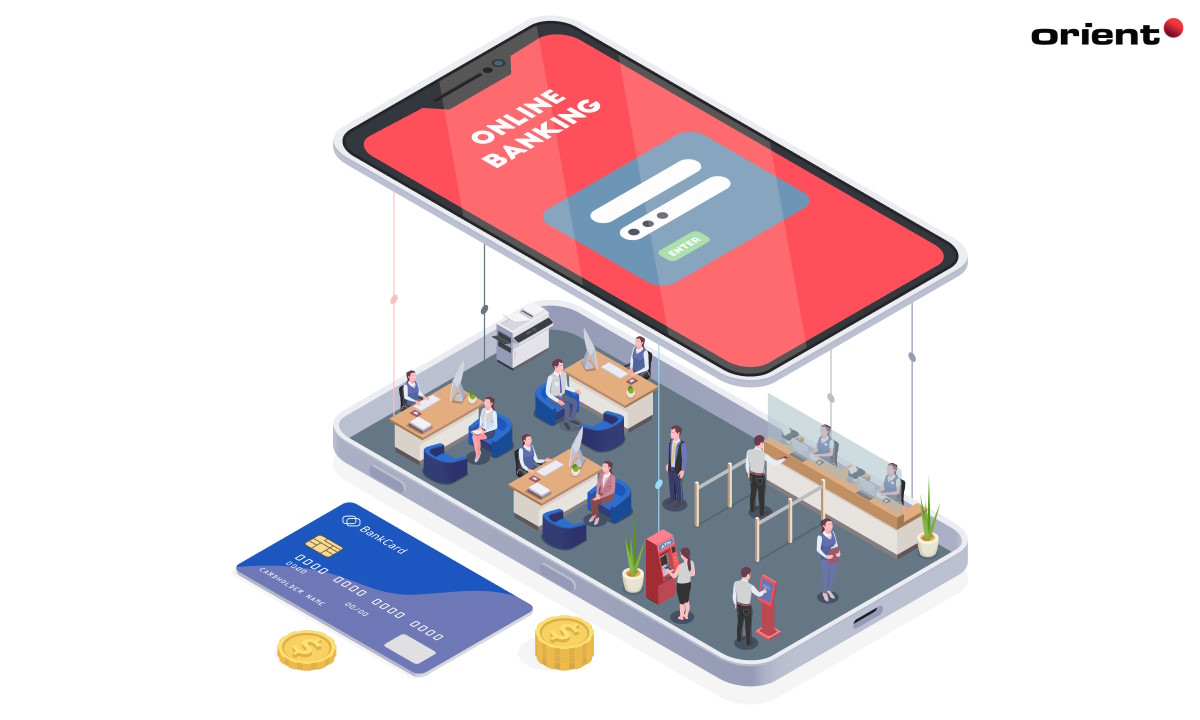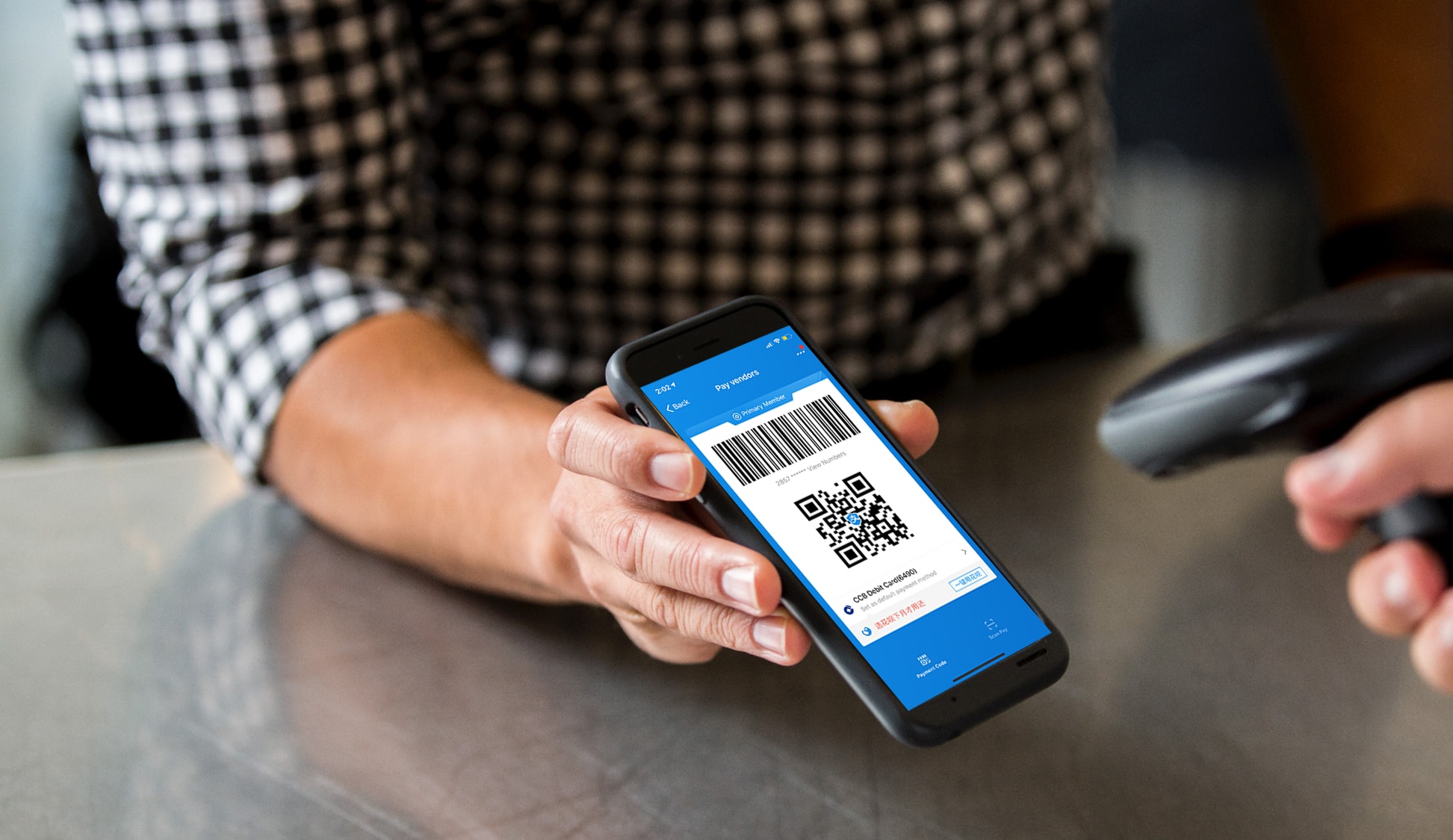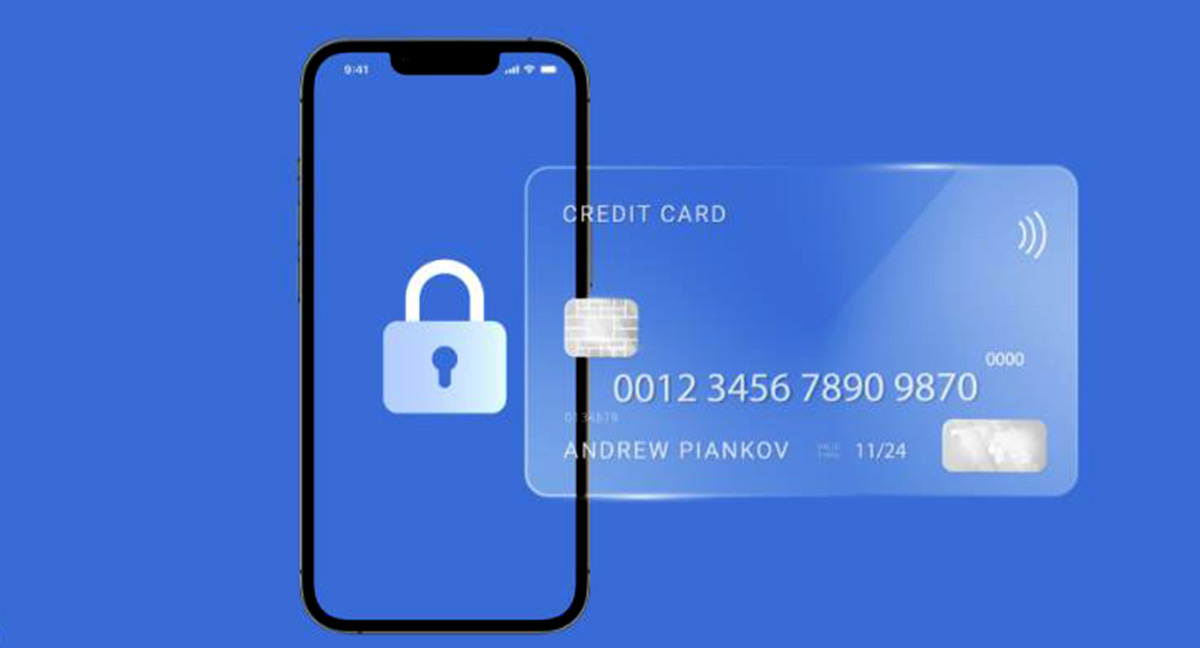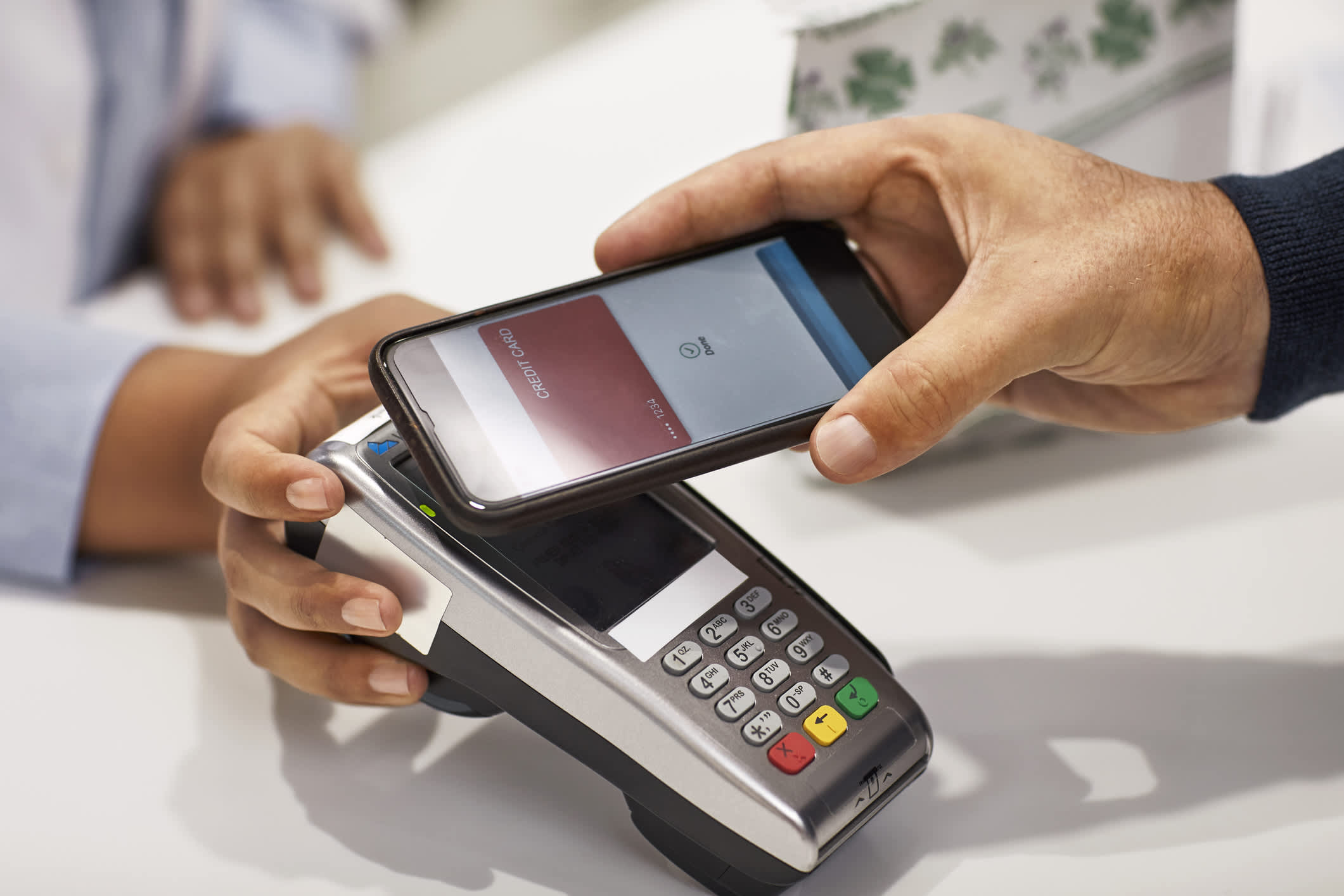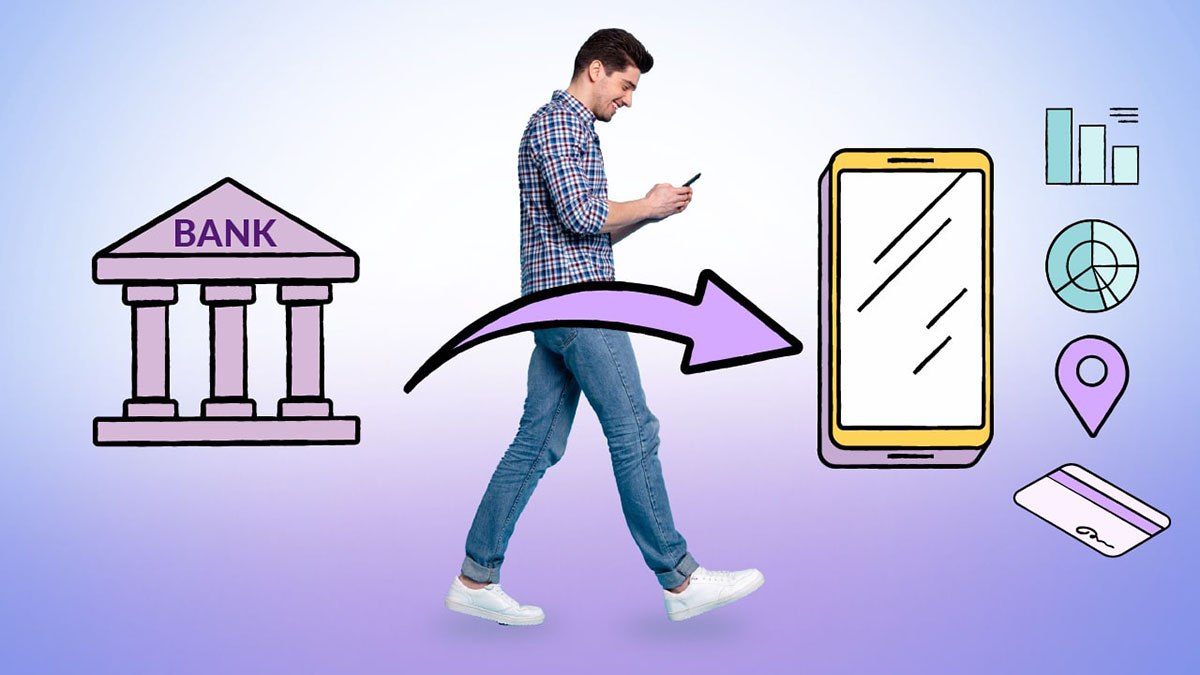

Finance
What Makes Mobile Banking Somewhat
Modified: February 21, 2024
Discover the convenience of mobile banking for managing your finances on-the-go. Streamline your financial tasks with secure access to accounts, transfers, and payments, all from the palm of your hand.
(Many of the links in this article redirect to a specific reviewed product. Your purchase of these products through affiliate links helps to generate commission for LiveWell, at no extra cost. Learn more)
Table of Contents
Introduction
In today’s digital age, mobile banking has become an integral part of our everyday lives. The convenience and accessibility it offers have revolutionized the way we manage our finances. With just a few taps on our smartphones, we can now check account balances, make transactions, and even plan for our financial future.
Mobile banking refers to the use of a mobile device, such as a smartphone or tablet, to access banking services remotely. It enables individuals to perform various financial activities anytime, anywhere, without the need to visit a physical bank branch. With the rapid advancements in technology and the increasing adoption of mobile devices, mobile banking has gained immense popularity among consumers.
Advancements in mobile banking technology have made it easier than ever for individuals to manage their finances on the go. From simple tasks like checking account balances to more complex activities like transferring funds between accounts, mobile banking provides users with a convenient and efficient way to stay on top of their financial health.
This article will delve into the advantages and challenges of mobile banking, providing insights into why it has become an indispensable tool in the financial landscape. We will explore the accessibility and convenience it offers, the various account management features available, the security measures in place, the financial planning tools provided, and the cost-effectiveness of mobile banking. Additionally, we will also address some of the challenges and concerns associated with mobile banking, such as security risks, technical issues, and the limitations of certain functions.
Whether you are a tech-savvy individual or someone who values convenience, mobile banking has something to offer. Join us on this journey as we explore the world of mobile banking and discover how it can empower you to take control of your finances with utmost ease and efficiency.
Advantages of Mobile Banking
Mobile banking brings a multitude of benefits that make it a preferred choice for managing finances. Here are some of the advantages that mobile banking offers:
- Accessibility and Convenience: One of the primary advantages of mobile banking is the ability to access your accounts anytime and anywhere. With just a few taps on your mobile device, you can check your account balances, review recent transactions, and even deposit checks using mobile check deposit. No longer do you need to visit a physical bank branch during limited operating hours, as mobile banking provides 24/7 access to your financial information.
- Account Management Features: Mobile banking apps offer a range of features that help you efficiently manage your accounts. You can easily transfer funds between accounts, pay bills, set up automatic payments, and manage your credit card transactions, all from the convenience of your mobile device. These features allow you to stay organized, keep track of your spending, and have a real-time view of your financial situation.
- Secure Transactions: Mobile banking employs multiple security measures to protect your financial data and transactions. These include secure login methods, encryption technology, two-factor authentication, and notifications for suspicious activities. The use of biometric authentication, such as fingerprint or facial recognition, adds an extra layer of security. With these robust security measures in place, you can have peace of mind knowing that your financial information is well-protected.
- Financial Planning Tools: Many mobile banking apps offer additional financial planning tools and resources to help you make informed decisions about your money. You can set budget goals, track your spending habits, and receive personalized insights and recommendations for optimizing your finances. These tools empower you to take control of your financial future and work towards your savings and investment goals.
- Cost-Effectiveness: Mobile banking can also help you save money. With features like electronic statements, online bill pay, and the ability to monitor your spending, you can reduce paper waste and avoid late payment charges. Additionally, some banks offer fee-free or discounted services for transactions conducted through mobile banking, saving you money on fees that are typically associated with traditional banking methods.
Overall, the advantages of mobile banking are clear. It offers unparalleled accessibility, convenience, and a wide range of account management features, all while ensuring the security of your financial information. With the additional financial planning tools and cost-saving benefits, mobile banking empowers users to take control of their finances and achieve their financial goals with ease.
Accessibility and Convenience
One of the key advantages of mobile banking is the unparalleled accessibility and convenience it offers to users. Gone are the days when you had to physically visit a bank branch during limited operating hours to manage your finances. With mobile banking, you can access your accounts and perform various financial activities at any time and from anywhere.
Through mobile banking apps provided by banks and financial institutions, you can easily check your account balances, review transaction history, and even make transfers between your accounts. No longer do you have to wait in long queues or rush to the bank before it closes – all your banking needs are right at your fingertips.
The convenience of mobile banking extends beyond traditional banking services. With mobile check deposit, you can simply take a picture of a check using your phone’s camera and deposit it into your account, eliminating the need to physically visit a bank branch or ATM. This feature is particularly useful for individuals who receive payments in the form of checks, saving them time and effort.
Mobile banking apps also provide easy access to pay bills. Users can set up automatic payments for recurring bills, such as utilities or credit card statements, ensuring that they are paid on time without the need for manual intervention. Additionally, many mobile banking apps offer the option to receive alerts and notifications for due dates or when a new bill is generated, keeping users informed about their financial obligations.
Besides basic banking services, mobile banking also offers the convenience of managing credit card accounts. Users can view their credit card statements, check current balances, and monitor recent transactions, providing them with a comprehensive overview of their credit card activity. This accessibility empowers individuals to actively manage their credit card usage, detect any unauthorized transactions promptly, and make timely payments to avoid late fees and penalties.
Furthermore, mobile banking apps often provide location services that enable users to find the nearest bank branches, ATMs, or even retail locations that accept mobile payments. This can be extremely handy when you are in an unfamiliar area and need access to banking services or cash withdrawals.
In summary, the accessibility and convenience offered by mobile banking are unmatched. With 24/7 access to your accounts, the ability to perform various financial activities, and features such as mobile check deposit and bill pay, managing your finances has never been easier. Mobile banking puts the power of banking in the palm of your hand, allowing you to take control of your financial life on your terms.
Account Management Features
Mobile banking apps provide a wide range of account management features that empower users to efficiently manage their finances. These features go beyond the basic functions of checking balances and making transfers, offering a comprehensive suite of tools to help users stay organized and in control of their accounts.
One of the key features of mobile banking apps is the ability to transfer funds between accounts. Whether you need to move money from your checking to your savings account or make a payment on your credit card, mobile banking allows for quick and seamless transfers. This flexibility enables users to easily allocate funds, pay bills, and manage their cash flow in a way that suits their individual financial needs.
Another important account management feature is the ability to set up automatic payments. Mobile banking apps allow you to schedule recurring payments for bills, such as utilities or rent, ensuring that they are paid on time each month. This feature eliminates the need for manual bill payments and reduces the risk of late fees or missed deadlines. It provides a convenient and hassle-free way to manage your financial obligations and ensures that you stay on top of your payments.
Many mobile banking apps also offer the ability to create and manage savings goals. Users can set specific savings targets, track their progress, and receive notifications when they reach milestones. This feature helps individuals stay motivated and disciplined in their savings efforts, whether they are saving for a vacation, a down payment on a home, or an emergency fund. Mobile banking makes it easy to monitor your savings journey and adjust your financial goals as necessary.
Additionally, mobile banking apps often provide detailed transaction history and spending analysis. Users can view their past transactions, categorize them, and see detailed breakdowns of their spending habits. This feature gives individuals insights into their financial patterns and helps identify areas where they may need to adjust their spending behavior. It promotes financial awareness and empowers users to make informed decisions about their money.
Moreover, many mobile banking apps integrate with personal finance management tools and budgeting apps. This allows users to sync their banking information with these apps, enabling a more holistic view of their financial situation. With these integrations, users can track expenses, create budgets, and receive personalized financial insights based on their spending patterns. This feature enhances financial planning and helps users make smarter financial decisions.
Overall, the account management features offered by mobile banking apps provide users with the tools and resources to effectively manage their finances. From transferring funds and scheduling automatic payments to setting savings goals and analyzing spending habits, these features empower users to take control of their accounts and work towards their financial goals with ease.
Secure Transactions
Security is a critical aspect of mobile banking, and financial institutions have implemented robust measures to ensure the safety of transactions carried out through mobile banking apps. Mobile banking apps employ advanced encryption technology, secure login methods, and multiple layers of authentication to protect sensitive financial information from unauthorized access.
One of the primary security features of mobile banking apps is secure login methods. Instead of traditional usernames and passwords, many apps now offer biometric authentication options, such as fingerprint or facial recognition. These biometric authentication methods add an additional layer of security by ensuring that only the authorized user can access their accounts. This helps to prevent unauthorized access to sensitive financial information even if the user’s device gets stolen or lost.
Mobile banking apps also employ encryption technology to protect user data. When data is transmitted between a user’s device and the banking server, it is encrypted using industry-standard encryption protocols. This ensures that any information transmitted, such as account numbers, passwords, and transaction details, is safeguarded from interception or unauthorized access.
Additionally, many mobile banking apps offer two-factor authentication (2FA) as an extra layer of security. 2FA requires users to provide an additional piece of information, usually a one-time verification code sent to their registered mobile number, before accessing certain functions or completing transactions. This adds an extra layer of protection, as even if someone obtains the user’s login credentials, they would still need access to their mobile device to complete the authentication process.
Financial institutions also employ advanced fraud detection systems to monitor and identify suspicious activities. These systems use algorithms that analyze user behavior and transaction patterns to detect any anomalies or potentially fraudulent transactions. In case of any suspicious activities, users are often alerted through notifications, email, or SMS, allowing them to take action and report any unauthorized transactions immediately.
It’s important for users to take additional precautions to ensure the security of their mobile banking transactions. This includes using strong and unique passwords, not sharing login credentials with anyone, and regularly updating the mobile banking app to ensure the latest security patches and features are in place.
In summary, mobile banking apps prioritize the security of transactions by employing secure login methods, encryption technology, two-factor authentication, and fraud detection systems. These robust security measures protect user data and provide peace of mind to mobile banking users, ensuring that their financial transactions are secure and confidential.
Financial Planning Tools
Mobile banking goes beyond basic account management by offering a range of financial planning tools to help users make informed decisions about their money. These tools empower individuals to take control of their financial future and work towards their savings and investment goals.
One of the key financial planning tools provided by mobile banking apps is the ability to set budget goals. Users can set specific spending limits for different categories, such as groceries, entertainment, or transportation. The app can track their expenses and send notifications when they are close to exceeding their budget. This feature promotes financial discipline and helps individuals keep their spending in check.
Many mobile banking apps also offer spending analysis features that categorize expenses and provide insights into spending habits. Users can see a breakdown of their spending patterns and identify areas where they may be overspending. This analysis helps users make more conscientious financial decisions and adjust their budgets accordingly.
Furthermore, mobile banking apps often provide tools to help users save and invest their money. Users can set specific savings goals, such as saving for a vacation or a down payment on a home. The app can track their progress and provide notifications when they are nearing their target. This feature encourages individuals to stay motivated and disciplined in their savings efforts.
Some mobile banking apps also offer options for automatic savings, where a specified percentage of every transaction or a fixed amount is automatically transferred to a savings account. This allows users to save without even thinking about it, facilitating consistent and effortless savings habits.
In addition to savings tools, mobile banking apps may provide access to investment opportunities. Users can explore investment options, view real-time market data, and even make investment transactions directly from their mobile devices. This feature gives users the flexibility and convenience to manage their investment portfolio on the go.
Moreover, financial planning tools within mobile banking apps may include access to educational resources and calculators. Users can access articles, blog posts, or videos related to personal finance and investment topics. Additionally, calculators for loan payments, retirement savings, and mortgage calculations can help users make informed financial decisions.
The availability of these financial planning tools within mobile banking apps provides users with the resources to make informed financial decisions and work towards their financial goals. Whether it’s setting budgets, tracking expenses, saving for specific goals, or exploring investment options, mobile banking empowers individuals to take control of their financial future and make smarter choices about their money.
Cost-Effectiveness
Mobile banking offers significant cost-saving benefits for users compared to traditional banking methods. By leveraging the convenience and efficiency of mobile technology, individuals can reduce expenses and take advantage of fee-free or discounted services.
One of the primary cost-saving benefits of mobile banking is the reduction of paper waste. Through electronic statements, users can opt to receive their account statements digitally instead of receiving physical copies in the mail. This not only helps the environment by reducing paper consumption but also eliminates the cost associated with printing and mailing paper statements.
Mobile banking also offers online bill payment features that allow users to pay their bills directly through the app. By eliminating the need for mailing physical checks or making in-person cash payments, individuals can save on postage fees and avoid potential late payment charges. The ability to set up automatic bill payments further ensures timely payments without the risk of forgetting or missing due dates.
Additionally, many financial institutions offer fee-free or discounted services for transactions carried out through mobile banking. This includes activities such as fund transfers, checking account balances, or even making mobile check deposits. These cost-saving benefits incentivize users to opt for mobile banking as a more affordable alternative to traditional banking services.
Mobile banking also allows users to closely monitor their spending habits, helping them stay on top of their finances and avoid unnecessary expenses. With real-time access to transaction history and spending analysis features, individuals can identify areas where they may be overspending and make necessary adjustments to their budget. By taking control of their spending, users can reduce unnecessary expenses and allocate their funds more effectively.
Furthermore, mobile banking introduces convenience features that save users time and money. For example, the ability to find the nearest ATMs or bank branches through the app ensures that individuals can access cash or make in-person transactions without wasting time or incurring additional costs traveling to distant locations.
Overall, mobile banking offers significant cost-saving advantages for users. From reducing paper waste and postage fees to accessing fee-free or discounted services, mobile banking provides a cost-effective alternative to traditional banking methods. By empowering individuals to manage their finances efficiently and make informed financial decisions, mobile banking helps users optimize their financial health and save money in the process.
Challenges of Mobile Banking
While mobile banking offers numerous advantages, it also presents some challenges that users should be aware of. These challenges include security concerns, technical issues, and the limitations of certain functions.
One of the main challenges of mobile banking is security. Although banks implement robust security measures, such as encryption technology and two-factor authentication, there is always a risk of cyber threats and unauthorized access. Users must be cautious about protecting their login credentials, using secure networks, and regularly updating their mobile banking apps to the latest version to mitigate these risks. Additionally, the increasing prevalence of mobile malware and phishing attacks requires users to be vigilant and exercise caution to avoid falling victim to fraudulent activities.
Technical issues can also pose challenges in mobile banking. Connectivity problems, slow internet speeds, or system glitches may lead to delays or interruptions in accessing banking services. Mobile app compatibility issues can arise with certain devices or operating systems, limiting the functionality for some users. It is crucial for users to report any technical issues promptly and stay updated with the latest software updates to ensure optimal mobile banking performance.
Another challenge is the limitations of certain mobile banking functions compared to traditional banking methods. While basic transactions and account management can be easily performed through mobile banking apps, some complex services may not be available or may have limited functionality. For example, opening certain types of accounts or accessing specialized financial products may require a visit to a physical bank branch. Users must be aware of these limitations and understand that certain banking needs may still require traditional methods.
Furthermore, mobile banking may not be suitable for everyone. Some individuals may prefer face-to-face interactions and personal assistance that traditional banking provides. Others may have limited access to smartphones or lack the necessary digital literacy to utilize mobile banking effectively. Financial institutions need to ensure that customers have access to alternative banking methods to accommodate these preferences and circumstances.
Despite these challenges, financial institutions continuously work to improve the security and functionality of mobile banking. Regular updates, enhanced security measures, and user education efforts aim to mitigate risks and provide a seamless user experience.
It is important for users to be aware of these challenges and take necessary precautions while using mobile banking services. Understanding the potential risks and limitations allows users to make informed decisions about their banking needs and utilize mobile banking effectively and securely.
Security Concerns
When it comes to mobile banking, security is of utmost importance. While financial institutions implement stringent security measures to protect user data, there are inherent security concerns that users should be aware of to ensure the safety of their financial information.
One major security concern in mobile banking is the risk of unauthorized access to user accounts. Hackers and cybercriminals constantly devise new methods to exploit vulnerabilities in mobile devices and banking apps. This can include techniques such as phishing, malware attacks, or even intercepting data during transmission. Users must be cautious and vigilant to protect their login credentials, avoid clicking on suspicious links or downloading untrusted applications, and use secure networks for banking transactions.
Another security concern is the potential loss or theft of mobile devices. If a smartphone or tablet containing sensitive banking information falls into the wrong hands, it can lead to unauthorized access to bank accounts. To address this concern, mobile banking apps now commonly offer biometric authentication methods, such as fingerprint or facial recognition, to reduce the risk of unauthorized access even if the device is lost or stolen. Users should also enable device security features such as PIN codes, passcodes, or device encryption to provide an additional layer of protection.
The rise of mobile malware poses another significant security concern. Malicious applications or software can be designed to look like legitimate banking applications, tricking users into providing their login credentials or accessing their private financial data. To mitigate this risk, users should only download mobile banking apps from trusted sources, such as official app stores, and regularly update their apps to ensure they have the latest security patches and features.
Moreover, users must remain cautious of phishing attacks. Phishing involves fraudulent attempts to obtain sensitive information, such as usernames, passwords, or credit card details, by posing as a trustworthy entity. These attacks are often initiated through deceptive emails, text messages, or phone calls. Users should be vigilant and avoid clicking on suspicious links or providing personal information in response to unsolicited communication.
To address these security concerns, financial institutions prioritize the implementation of robust security measures. This includes encryption technology, advanced fraud detection systems, two-factor authentication, and continuous monitoring of user accounts for any suspicious activities. Banks also provide educational resources and guidelines to promote security awareness and best practices among their customers.
Users must also play an active role in ensuring the security of their mobile banking activities. This includes using strong and unique passwords, regularly updating mobile banking apps, enabling security features on mobile devices, and promptly reporting any suspicious activities or transactions to the bank.
By being aware of these security concerns and taking necessary precautions, users can enjoy the convenience and benefits of mobile banking while ensuring the safety of their financial information.
Technical Issues
While mobile banking offers convenience and accessibility, it is not without its share of technical issues that users may encounter. These technical issues can disrupt the user experience and may require troubleshooting or assistance from the mobile banking provider.
Connectivity problems are a common technical issue in mobile banking. Slow internet speeds or unstable network connections can lead to delays or difficulties in accessing banking services through mobile apps. This can be particularly frustrating when users need to make time-sensitive transactions or access important account information. It is advisable to check internet connectivity or switch to a more stable network to mitigate these issues.
System glitches or app crashes can also occur while using mobile banking apps. These technical issues can range from minor inconveniences to more serious disruptions. Users may experience screen freezing, unresponsive buttons, or sudden logouts. In some cases, reinstalling the app or clearing cache and data can resolve these issues. It is essential to keep the mobile banking app updated to the latest version, as app updates often include bug fixes and performance improvements.
Compatibility issues may arise when using mobile banking apps on certain devices or operating systems. Some apps may not function optimally on older devices or unsupported operating systems. In such cases, users may experience limited functionality or may not be able to download and install the app at all. Financial institutions often provide system requirements and compatibility information on their websites or app store listings to help users determine if their device meets the necessary specifications.
Furthermore, authentication problems can hinder access to mobile banking apps. Users may encounter difficulty in logging in to their accounts due to forgotten passwords, incorrect credentials, or issues with two-factor authentication codes. In such situations, it is crucial to follow the provided account recovery processes or contact customer support for assistance.
Addressing technical issues in mobile banking often requires a collaborative effort between the user and the financial institution. As a user, it is essential to promptly report any technical issues to the mobile banking provider’s customer support team. They can provide troubleshooting steps, offer guidance, or escalate the issue to the technical team for further investigation and resolution.
To minimize the occurrence of technical issues, users can follow best practices, such as keeping their mobile devices updated with the latest operating system and security updates. Regularly clearing cache and data from mobile banking apps can also help prevent sluggish performance or app crashes. Finally, it is important to use trusted app stores to download mobile banking apps, ensuring that users are accessing the official and secure versions provided by their financial institution.
While technical issues can be frustrating, they are often temporary and can be resolved with proper troubleshooting and support. By staying informed, proactive, and responsive to technical issues, users can continue to enjoy the benefits of mobile banking without significant disruptions.
Limited Functions
While mobile banking provides a wide range of convenient features, there are certain limitations to be aware of. These limitations may vary depending on the mobile banking provider and the specific app being used.
One common limitation is the availability of certain banking services or account types. While basic functions like checking account balances, transferring funds, and paying bills are typically available through mobile banking, more complex transactions or opening specialized accounts may require an in-person visit to a physical bank branch. For example, opening a business account or applying for a mortgage may require additional documentation and verification that cannot be completed through the mobile app.
Another limitation to consider is the need for robust customer support. Mobile banking apps often provide self-service options for common issues or queries. However, there may be situations where users require personalized assistance or have complex questions that cannot be adequately addressed through the app alone. In such cases, users may need to contact customer support via phone, email, or chat, which may have limited availability or extended wait times.
The availability and functionality of mobile banking apps can also vary depending on the user’s geographic location. Certain features or services may be restricted or unavailable in certain regions. International users may experience limitations when performing transactions or accessing account information, such as currency conversion or availability of banking services in foreign countries.
Furthermore, mobile banking apps may have limitations in terms of transaction limits or funds transfer restrictions. These limitations help ensure security and prevent fraudulent activities. Users should be aware of these limits and plan accordingly when making larger transactions or transfers that may exceed the app’s predefined limits. In some cases, users may need to visit a physical bank branch to complete certain transactions that exceed the limitations set by the mobile banking app.
Despite these limitations, mobile banking continues to evolve and expand its functionality. Financial institutions are constantly updating and enhancing their mobile banking apps to offer a wider range of services and address user needs. It is crucial for users to regularly update their mobile banking apps to access the latest features and improvements.
It is important to remember that mobile banking is designed to provide everyday banking services and convenience. While there may be limitations, the majority of day-to-day banking needs can be effectively managed through mobile banking apps. Users should familiarize themselves with the available features and services of their specific mobile banking app to make the most of its functionality.
By understanding the limitations of mobile banking, users can set realistic expectations and determine when it may be necessary to utilize traditional banking methods for specific transactions or services that are not supported by the mobile app.
Conclusion
Mobile banking has transformed the way individuals manage their finances, offering unparalleled accessibility, convenience, and a wide range of account management features. With the ability to check account balances, transfer funds, pay bills, and even plan for the future, users have the power to take control of their financial lives right at their fingertips.
Throughout this article, we have explored the advantages of mobile banking, including its accessibility and convenience, the various account management features available, the security measures in place, the financial planning tools provided, and the cost-effectiveness it offers. From accessing accounts 24/7 to setting personalized budgets and receiving personalized insights, mobile banking empowers users to be proactive with their finances and make informed financial decisions.
However, it is important to acknowledge that mobile banking also presents challenges. Security concerns, such as unauthorized access and phishing attacks, require users to be cautious and proactive in safeguarding their personal information. Technical issues and limited functions can occasionally disrupt the user experience and may require troubleshooting or the utilization of traditional banking methods for specialized transactions.
Despite these challenges, financial institutions continuously work to enhance the security and functionality of mobile banking apps, providing regular updates, implementing advanced security measures, and offering customer support to address concerns or technical issues.
In conclusion, mobile banking has revolutionized the way we manage our finances, offering unparalleled convenience and empowering individuals to stay on top of their financial health. By leveraging the advantages of mobile banking and being aware of the associated challenges, users can confidently embrace mobile banking as a powerful tool for financial management and take control of their financial future.


